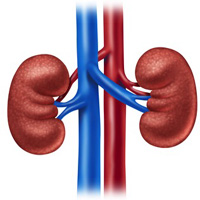Infectious complications of endourological treatment of kidney stones: A meta-analysis of randomized clinical trials

Supplementary Files: 91
All claims expressed in this article are solely those of the authors and do not necessarily represent those of their affiliated organizations, or those of the publisher, the editors and the reviewers. Any product that may be evaluated in this article or claim that may be made by its manufacturer is not guaranteed or endorsed by the publisher.
Authors
Objective: Endourological treatment is associated with a risk of postoperative febrile urinary tract infections and sepsis. The aim of this study was to review the reported rate of infectious complications in relation to the type and modality of the endourologic procedure.
Methods: This systematic review was conducted in accordance with the PRISMA guidelines. Two electronic databases (PubMed and EMBASE) were searched. Out of 243 articles retrieved we included 49 studies after full-text evaluation.
Results: Random-effects meta-analysis demonstrated that retrograde intrarenal surgery (RIRS) and percutaneous nephrolithotomy (PCNL) were associated with not significantly different odds of getting fever (OR = 1.54, 95% CI: 0.99 to 2.39; p = 0.06) or sepsis (OR = 1.52, 95% CI: 0.37 to 6.20, p = 0.56). The odds of getting fever were not significantly different for mini PCNL compared to standard PCNL (OR = 1.11, 95% CI: 0.85 to 1.44; p = 0.45) and for tubeless PCNL compared to standard PCNL (OR = 1.34 95% CI: 0.61 to 2.91, p = 0.47). However, the odds for fever after PCNL with suctioning sheath were lower than the corresponding odds for standard PCNL (OR = 0.37, 95% CI: 0.20 to 0.70, p = 0.002). The odds of getting fever after PCNL with perioperative prophylaxis were not different from the corresponding odds after PCNL with perioperative prophylaxis plus a short oral antibiotic course (before or after the procedure) (OR = 1.31, 95% CI: 0.71 to 2.39, p = 0.38).
Conclusions: The type of endourological procedure does not appear to be decisive in the onset of infectious complications, although the prevention of high intrarenal pressure during the procedure could be crucial in defining the risk of infectious complications.
on behalf of U-merge Ltd. (Urology for emerging countries), London-Athens-Dubai
How to Cite
PAGEPress has chosen to apply the Creative Commons Attribution NonCommercial 4.0 International License (CC BY-NC 4.0) to all manuscripts to be published.

 https://doi.org/10.4081/aiua.2022.1.97
https://doi.org/10.4081/aiua.2022.1.97



